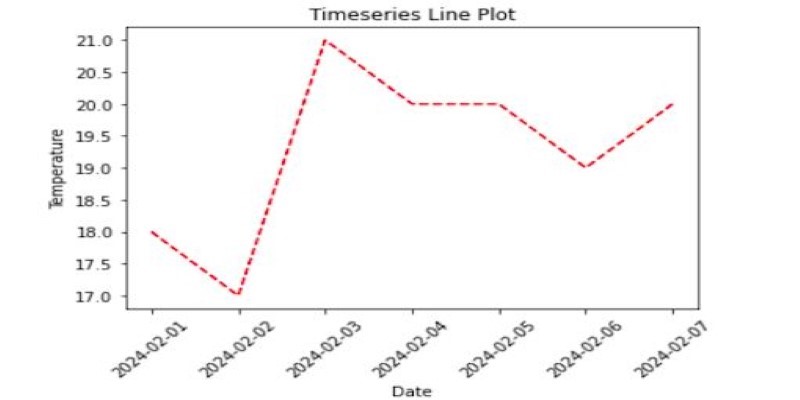Advertisement
Everyone talks about AI, but where is the real work happening? Not just startups, chatbots, and flashy apps—but serious research, deep investments, and national strategies pushing the technology forward. Some countries are just dipping their toes. Others are all-in, funding AI labs, building talent, and designing policies around it.
This article focuses on the 10 countries doing the heavy lifting in AI research and development in 2025. These aren’t just places with the most headlines—they’re where breakthroughs in language models, robotics, computer vision, and machine learning are being built and deployed at scale.
Let’s take a look.
The U.S. still leads the global AI scene. It’s home to OpenAI, Google DeepMind (now largely US-based), Meta AI, Microsoft Research, and countless university labs. Stanford, MIT, and Carnegie Mellon continue to rank high for AI research output.
What makes the U.S. unique is the mix of public and private investments. Massive funding from tech giants has created top-tier models like GPT-4, Gemini, and Claude. Government-backed efforts, such as DARPA’s AI Next campaign, focus on long-term AI applications in defense and science. The talent pool is strong, and many of the top researchers working elsewhere got their education in the U.S.
China is the main challenger to U.S. dominance. It’s not just matching—it’s setting its own pace. Chinese companies like Baidu, Alibaba, Tencent, and SenseTime are building their own AI models and tools.
The Chinese government plays a strong central role. National policies support AI development in facial recognition, urban surveillance, healthcare, and industrial robotics. China also produces a massive number of AI-related research papers and patents. Tsinghua University and the Chinese Academy of Sciences lead local innovation, and cities like Beijing and Shenzhen are now AI hubs.
The UK remains a heavyweight because of its early leadership and continued influence. DeepMind, originally based in London, helped put the UK on the AI map. Since then, Oxford, Cambridge, and University College London have kept the research flowing.

The UK's focus has been more balanced, spanning ethical AI, regulation, and foundational research. In 2025, it's home to emerging LLMs, AI ethics think tanks, and public-private research initiatives. Government agencies are also working on AI policy to match the pace of innovation.
Canada has been punching above its weight in AI for years. Toronto, Montreal, and Vancouver are home to some of the best AI researchers in the world. This is largely thanks to early investments and the work of researchers like Geoffrey Hinton and Yoshua Bengio.
The Vector Institute and Mila (Quebec AI Institute) are globally recognized. The Canadian government continues to support AI through funding programs and partnerships with academia. Canada’s AI focus leans toward ethical use, healthcare applications, and natural language processing.
Germany’s AI push is centered around industry. Its research institutions—like the Max Planck Society and Fraunhofer Institutes—focus on practical applications in manufacturing, engineering, and automotive technology.
With strong public funding and an AI strategy focused on “AI made in Germany,” the country emphasizes safety, explainability, and reliability. German companies like Siemens and Bosch are investing heavily in AI systems for smart factories, logistics, and robotics.
France is known for high-level academic research, especially in mathematics and computer science. INRIA (National Institute for Research in Digital Science and Technology) leads much of the country’s AI work, alongside École Polytechnique and Sorbonne University.
The French government's AI policy focuses on open science, fairness, and building local capacity. Paris is becoming a European AI hub, attracting startups and researchers from across the continent. AI in healthcare, mobility, and environmental monitoring is a major area of focus.
South Korea is moving fast in AI, especially in robotics, autonomous vehicles, and smart electronics. Samsung, LG, and Hyundai are driving AI development in both research and consumer products.

Government-backed plans, like the “AI National Strategy,” are helping South Korea scale up AI talent and infrastructure. Seoul is packed with tech campuses and AI accelerators. South Korea is also growing its influence in AI chip design and edge AI, which are crucial for real-time applications.
Japan’s AI edge comes from its long history in robotics and automation. Tokyo remains a global center for AI research in hardware-software integration. Companies like Sony, Hitachi, and NEC are investing in AI for robotics, aging society support, and medical diagnostics.
Japan's government has committed to using AI to solve social issues, from labor shortages to disaster management. Academic institutions like the University of Tokyo and RIKEN continue to produce impactful AI research.
India’s AI journey is fast-growing. It has one of the largest pools of software engineers and a rising number of AI startups. Institutes like IITs (Indian Institutes of Technology) and IIITs are expanding AI programs. Bengaluru and Hyderabad are becoming South Asia’s AI centers.
Government initiatives like “IndiaAI" aim to scale up AI adoption in agriculture, health, and education. India's focus is mostly on AI-for-scale tools that work for large populations. Speech tech, language processing for regional languages, and computer vision in public services are rising fields.
Singapore is small but influential in AI research and policy. Through national efforts like AI Singapore and the Smart Nation program, it focuses on applying AI to healthcare, finance, and city planning. The country is known for its structured approach, balancing innovation with strict data governance and ethical AI standards.
Top universities like NUS and NTU contribute significantly to AI publications in Asia. With strong public-private partnerships and a push for responsible AI, Singapore is now a key player in shaping how AI is developed and used across Southeast Asia.
AI in 2025 is a shared effort, not a solo race. While the U.S. and China still lead, other nations are shaping the future in their ways—through policy, ethics, education, and targeted innovation. From Singapore's structured planning to Canada's ethical focus, each country adds something different. What matters now isn't just speed or scale—it's building AI that solves real problems. The next wave of breakthroughs will come from collaboration, not just competition.
Advertisement

Discover Microsoft’s Responsible AI suite: fairness checks, explainability dashboards, harmful content filters, and others

Discover how insurance providers use AI for legal contract management to boost efficiency, accuracy, risk reduction, and more

Learn how Microsoft expands Azure AI Studio with GenAI tools to deliver smarter and more scalable AI solutions for everyone.

Explore how AI and digital transformation improve automation through smarter data, decision-making, and customer interactions

Discover how generative AI is set to revolutionize enterprise operations, from productivity to innovation and beyond

Discover how Otter.ai uses GenAI to enhance meetings with real-time insights, summaries, and seamless cross-platform access.

Learn 7 different methods to convert a string to bytes in Python. Explore techniques like encode(), bytes(), and bytearray() to handle data conversion effectively in your Python projects

Nvidia launched arm-based Windows PC CPUs, directly competing with Intel in performance and energy efficiency.

Discover AI gateways: tools for compliance, bias checks, audit trails, and so much more in this beginner’s guide.

Snowflake introduces a secure service to deploy AI and ML models with full data protection and cloud flexibility.

Meta launches an advanced AI assistant and studio, empowering creators and users with smarter, interactive tools and content

How to create and style a Matplotlib timeseries line plot in Python. This complete guide covers setup, formatting, handling gaps, and custom timeseries visualization techniques